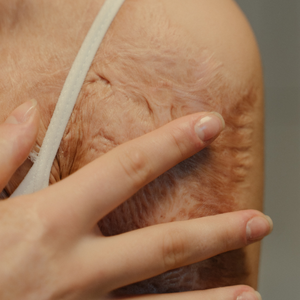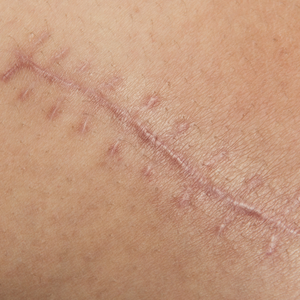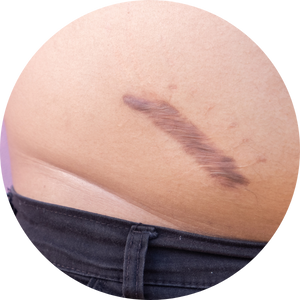
Minimising Scars: Expert Solutions for Smoother Skin.
Scars are a natural part of the body’s healing process after injury or inflammation. While many fade over time, some can be prominent, discoloured, or textured, causing cosmetic concern or discomfort. These can range from common post-surgical scars to more complex types like keloid scars or the various forms of acne scarring.
At SkinQure, Dr. Paul Charlson, a leading UK skin doctor with extensive experience, offers expert diagnosis and management for a wide array of scar types. His approach focuses on understanding the scar’s characteristics and its underlying cause, developing tailored strategies to improve appearance and restore skin confidence.
Understanding Scars: Types and Causes
Scars form when the deeper layer of the skin (dermis) is damaged. The body produces new collagen fibres to repair the injury, resulting in a scar. Different types of scars can form depending on the cause and individual healing:
-
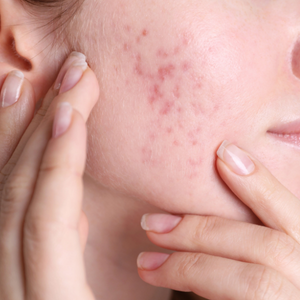
Acne Scars:
These are common and can vary significantly, including:
Ice Pick Scars: Small, deep, and narrow indentations.
Boxcar Scars: Wider, U-shaped scars with sharp edges.
Rolling Scars: Broad depressions with sloping edges, giving the skin a wavy or “rolling” appearance.
Post-inflammatory Hyperpigmentation (PIH): Flat, discoloured (red, brown, or purplish) marks left after spots heal, though not true scars, they are often associated with acne. -
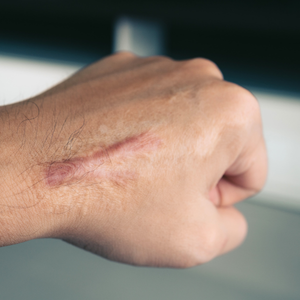
Keloid Scars:
Raised, firm, shiny, and often itchy or painful scars that grow beyond the original wound boundaries. They are more common in individuals with darker skin tones and can result from even minor injuries, piercings, or surgery. -

Hypertrophic Scars:
Raised, red, and itchy scars that stay within the boundaries of the original wound. They are often confused with keloids but tend to improve over time. -
Contracture Scars:
These occur when a large area of skin is lost, for example, from burns. They pull the edges of the skin together, potentially restricting movement. -
Atrophic Scars:
Depressed scars that appear as sunken areas in the skin, often resulting from conditions like chickenpox or severe acne where tissue is lost. -
Surgical or Traumatic Scars:
Scars resulting from cuts, abrasions, or surgical incisions, which can vary widely in appearance based on the injury and healing.
Expert Dermatological Assessment and Management at SkinQure
At SkinQure, Dr. Charlson conducts thorough dermatological assessments to accurately diagnose the type of scar(s) you have and understand their characteristics. This precise evaluation is crucial for developing an effective and individualised management plan.
His expertise encompasses a range of evidence-based strategies aimed at:
- ✓ Improving scar texture and appearance.
- ✓ Reducing discolouration and redness.
- ✓ Alleviating associated symptoms like itching or pain.
- ✓ Minimising scar prominence.
- ✓ Restoring skin confidence.
During a detailed consultation, Dr. Charlson will evaluate your specific concerns, discuss the nature of your scars, and recommend the most appropriate approach for your condition and desired outcomes.
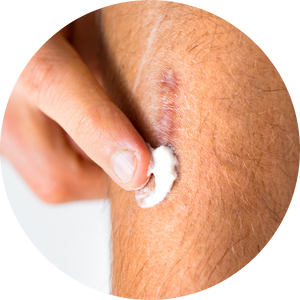
Treatment
Addressing scars often involves a combination of treatments tailored to the specific type, age, and location of the scar, as well as your individual skin type. Treatments may include:
- Topical Treatments: Silicone gels or sheets are often recommended for new scars to help them flatten and fade. Certain prescription creams can also be used for discolouration.
- Steroid Injections: Intralesional corticosteroid injections can be very effective in flattening and reducing the itch and redness of keloid and hypertrophic scars. Sometimes in combination with 5 FU or cyrotherapy
- Laser Therapy: Various types of lasers can be used:
Vascular lasers: Target redness and help flatten raised scars.
Fractional Lasers (ablative and non-ablative): Improve scar texture, stimulate collagen remodelling, and can be very effective for acne scars, surgical scars, and atrophic scars. - Microneedling & RF Microneedling: These procedures create controlled micro-injuries to stimulate collagen production and improve the texture of atrophic and rolling acne scars. RF microneedling adds heat for enhanced collagen stimulation.
- Subcision: This is really a safe and effective treatment for tethered depressed scars particularly rolled scars.
- Chemical Peels: Can improve the appearance of superficial acne scars and post-inflammatory hyperpigmentation by promoting skin exfoliation and renewal.
- TCA Cross: This is a form of localised peel. Slow effective treatment with some down time. Usually multiple treatments required
- Dermal Fillers: Injectable fillers, typically hyaluronic acid, can be used to raise depressed (atrophic) scars to the level of the surrounding skin, making them less noticeable.
- Collagen stimulators: We use these to stimulate collagen in the scar in preference to dermal fillers
- Surgical Scar Revision: For certain types of scars, surgical techniques (e.g., excision, subcision) can be used to improve their appearance, especially for large, wide, or functionally impairing scars. Paul frequently uses punch excision and find this effective for a small number of scars.
- Cryotherapy: Freezing the scar tissue with liquid nitrogen can be used for some raised scars, particularly keloids, to flatten them.
- Pressure Therapy: Applied using special garments or dressings, pressure can help to flatten and soften new scars, especially after burns or surgery.
Schedule a Consultation
If you are concerned about any type of scarring and are seeking to improve their appearance, we encourage you to schedule a consultation with Dr. Paul Charlson at SkinQure for expert dermatological evaluation and personalised management strategies.

